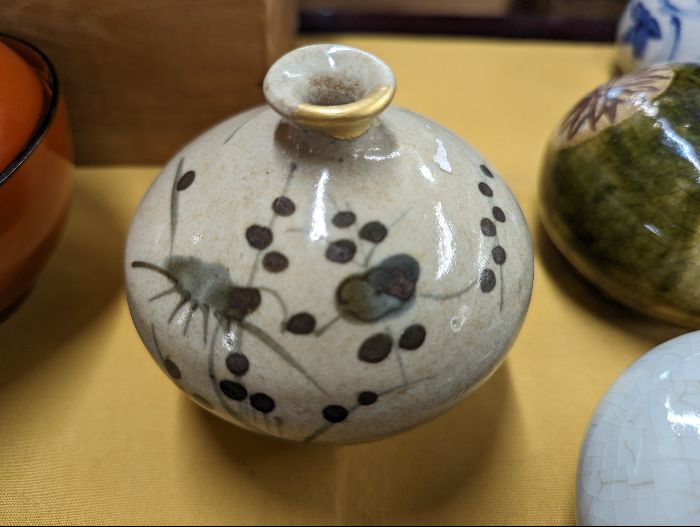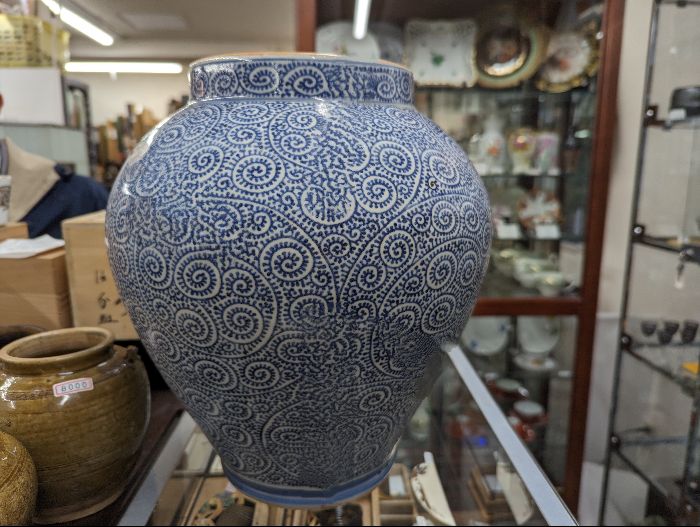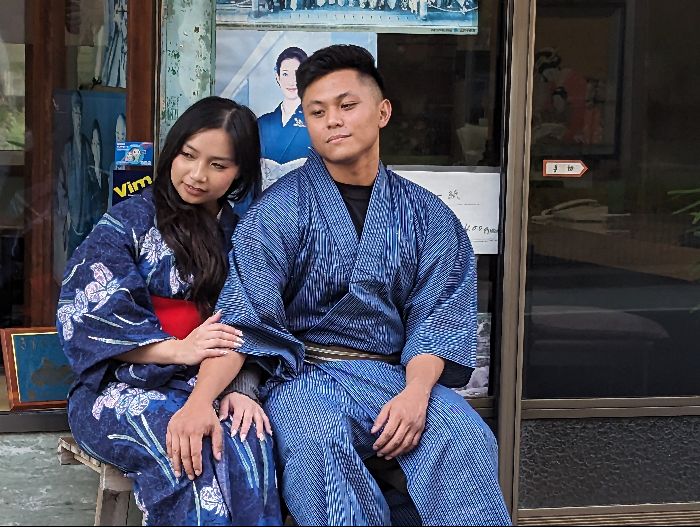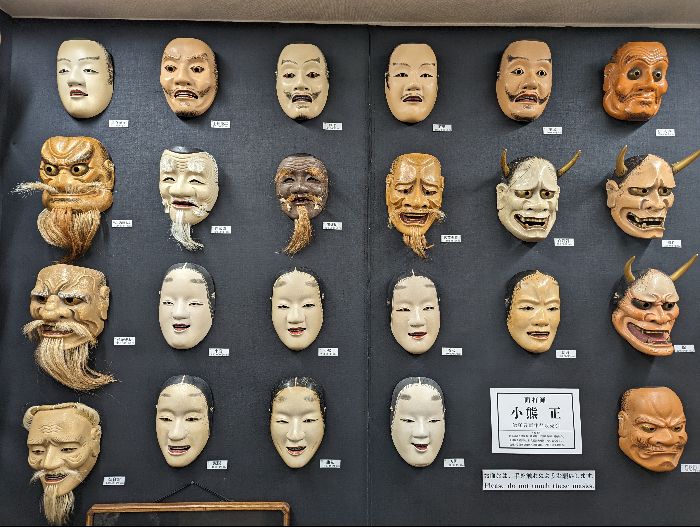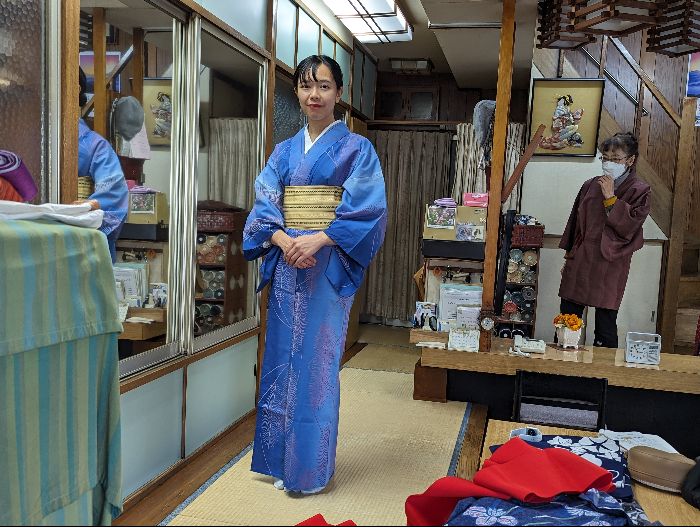Kadomatsu are a pair of New Year’s decorations made with pine branches, bamboo sticks and plum sprays, which are set up in front of the gate or the door of residences to welcome the deity of the new year.
Originally, they consist of three bamboo sticks of different lengths which are cut diagonally; pine branches and plum sprays are fastened to the bamboo sticks with new straw ropes. These three plants are considered auspicious, particularly pine trees, which are symbols of longevity, and bamboos, those of vitality.
Why three bamboo sticks? “Three” is considered a lucky number in the sense that it is indivisible by two and regarded as a happy matchmaker of the two entities. Cutting diagonally is said to mean bringing good luck, because the cut surface looks like a laughing mouth; Japanese proverb says, “Laugh and grow fat.”
Placing the highest bamboo stick outside followed by the second highest one inside and the third highest one in the center in the foreground is called “mukae kazari” or literally welcoming decoration which represents desire for business prosperity and increase in family members blessed with children.
門松
門松は、新年に年神様をお迎えする依り代として門口に一対立てて飾る松。
本来、斜めに切られた長さの違う3本の竹に松の枝と梅を新しい縄で結ぶ。松・竹・梅は、いずれも寒さに耐える、めでたいものとの意で用いられる。とくに松は常緑樹ゆえ永遠の生命、竹は生命力の強さの象徴とされる。
竹はなぜ3本なのか。「3」は仲を取り持つ意味の縁起物で、2で割り切れないめでたい数字とされる。長さは7:5:3の比。そして、斜めに切るのは、切り口が“笑っている口”に似ていることから「笑う門には福来る」すなわち「福を招く」意味とされる。
最も高い竹を外側に、2番目に高い竹を内側に、3番目に高い竹を手前中央に飾る飾り方を「迎え飾り」と称し、商売繁盛や子供に恵まれ家族が増えることを願う気持ちを表したものとされる。

